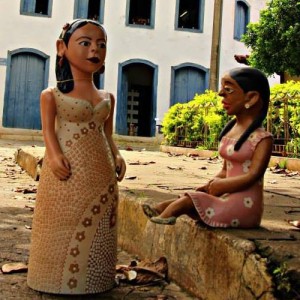The Brazilian equivalent of Jesse James and fashion design may not seem immediately connected, but an artisan has reinvented some bandit classics to create shoes that are now desired by fashionistas worldwide. Espedito Seleiro, a craftsman from the small town of Nova Olinda in the state of Ceará has the creation of multicolored leather shoes as his main source of income – all inspired in the shoes worn by Lampião, one of the most famous and feared gang leaders in the Brazilian northeast in the 1920s and 1930s. Lampião (“Oil Lamp” in Portuguese) was the nickname of Virgulino Ferreira da Silva, a cattle farmer and also an accomplished leathercraft artisan born in the backlands of the state of Pernambuco. Lampião became an outlaw after falling into a feud with other local families which resulted in his father being killed by the police – he sought vengeance and proved to be





